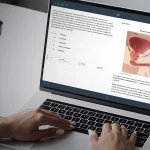For students considering a career in healthcare, it’s hard to ignore the growing demand for, and recognition of, physician assistants.
With this in mind, questions arise: What makes this a wise career choice? Why is the demand for PAs growing? Are PAs more content than other medical professionals?
And for students leaning toward taking the PA path, all those questions can really be summarized with one bottom-line inquiry: Why become a PA?
In the not-so-distant past, this question was very commonly asked and, frankly, difficult to answer. However, times have changed for PAs . . . and they’ve changed drastically.
Once marginalized and rarely considered, PAs are now in high demand. And it’s not just the demand that makes this an attractive career choice — it’s the job itself. Consider this . . .
Physician Assistant was ranked #1 in U.S. News and World Report’s “100 Best Jobs List of 2021.”
Now the question “Why become a physician assistant?” becomes even more intriguing. Is it the money? The flexibility? The opportunities? Or is it something else? Well, the short answer is yes, yes, yes, and yes.
But let’s answer those questions in more detail. Here are five reasons more and more students are choosing to become a PA.
Professional Versatility
One of the things PAs find most appealing about their career choice is the ability to practice medicine in various specialties. Rather than staying in one particular specialty for their entire career, PAs are versatile enough to move to a new specialty for a variety of reasons — a new challenge, a change of interest, increased salary, a different schedule, etc.
According to a 2014 National Governors Association report, a physician assistant is a “sophisticated and flexible medical professional who can function in many specialty areas and within many practice structures.”
The general medical and surgical education PAs receive, along with the requirement to recertify regularly, gives physician assistants professional versatility and is seen as a unique benefit for those in the PA profession.
Work/Life Balance
Unlike other medical professionals who are often on call or work lengthy, unpredictable shifts, the majority of PAs work a 9–5 schedule. This, of course, depends on the specialty one chooses as a PA; however, PAs are rarely required to be on call and can leave their work at the office when they go home for the day. This schedule predictability decreases professional burn out and allows a PA to enjoy a more relaxing and stress-free work/life balance.
Length of School
The length of school required to become a PA as opposed to a medical doctor is a significant and oft-cited factor when students choose to study to become a physician assistant.
Both healthcare positions require a four-year college degree but the trajectory changes after that. PAs attend a two- to three-year PA program, while doctors attend medical school for four years before completing their residency. Some students also pursue a fellowship.
PAs are required to take and pass the PANCE® after graduating from PA school in order to begin practicing as a PA. Medical doctors must complete several years of residency after graduating from medical school.
The shorter educational timeline and the ability to start practicing medicine upon graduation from a PA program are appealing incentives for those wishing to begin their careers sooner rather than later.
Competitive Salary
While PAs do not receive as much compensation as physicians or surgeons, the average salary for physician assistants is still considerably higher than most professions in the United States, even in the healthcare industry.
According to the U.S. Bureau of Labor Statistics, the median salary for a PA in 2020 was $115,390 per year (or $55.48 per hour).
Comparatively, the median salary for other medical occupations are as follows:
- EMTs and Paramedics: $36,650
- Registered Nurses: $75,330
- Occupational Therapists: $86,280
- Physical Therapists: $91,010
- Nurse Practitioners: $117,670
This median annual wage for PAs, which is only expected to increase each year as demand for PAs rises, is a considerable factor for those choosing the PA profession.
Job Market
Perhaps more than any other reason, the burgeoning demand for PAs (and the job security that accompanies that demand) is what drives many students to the profession.
According to the U.S. Bureau of Labor Statistics, there were 129,400 PA jobs in 2020. That job outlook is expected to grow to 169,500 by 2030 — that’s a staggering 31% growth rate.
In addition to the growth in the number of jobs available, responsibilities and opportunities for PAs are expected to grow as well over the next decade with many states already revising legislation regarding PA scope of practice, supervision, and delegation of authority.
When asking the question “Why should I become a PA?” there are multiple factors to consider, but professional versatility, work/life balance, competitive salary, length of school, and an ever-growing job market are certainly at the top of most lists.
Are you preparing for an upcoming high-stakes exam like the PANCE® or PANRE®? If so, check out UWorld’s comprehensive online learning tool for your PANCE, PANRE, didactics, and clinical success. Our challenging questions, in-depth explanations, and performance tracking features will have you ready for success on exam day. Start your FREE trial today.
Dunker, E. Krofah, F. Isasi. The Role of Physician Assistants in Health Care Delivery (Washington, D.C.: National Governors Association Center for Best Practices, September 22, 2014).
U.S. Bureau of Labor Statistics. (2021, September 8). Physician assistants : Occupational outlook handbook. U.S. Bureau of Labor Statistics. Retrieved September 19, 2021, from https://www.bls.gov/ooh/healthcare/physician-assistants.htm.
U.S. Bureau of Labor Statistics. (2021, September 8). Physician assistants : Occupational outlook handbook. U.S. Bureau of Labor Statistics. Retrieved September 19, 2021, from https://www.bls.gov/ooh/healthcare/physician-assistants.htm#tab-8.




